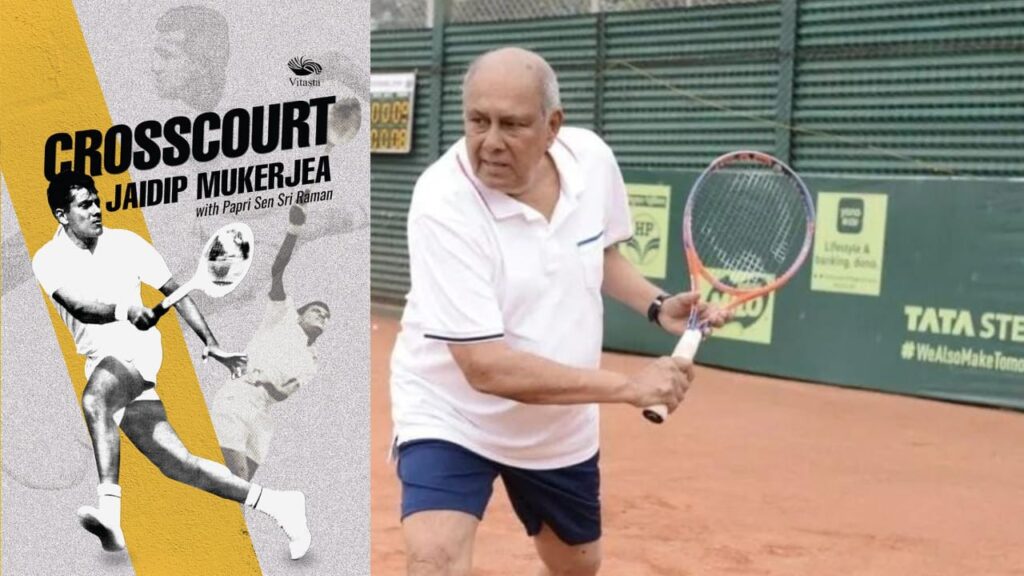
Writing an autobiography is never easy, but Jaidip Mukerjea has done it well. It adds to India’s tennis literature and increases its depth. The book, titled Crosscourt, is co-written with Papri Sen Sri Raman and released by Vitasta.
Ramanathan Krishnan, one of India’s greatest tennis players, was impressed by Mukerjea’s style of play, “aggressive, more on the unorthodox side”. “I felt happy seeing him for selfish reasons,” said Krishnan. “I was keen to do well in Davis Cup competition for India.” His dream came true in 1966 when India reached the Challenge Round [the final] of the Davis Cup. After that, Krishnan, Mukerjea, and Premjit Lall were known as the Three Musketeers of Indian Tennis, and they captured the hearts of tennis lovers worldwide.
The book takes one through Mukerjea’s journey – right from when he was a naughty kid, stealing Mahatma Gandhi’s ‘khoram’, to becoming one of the finest tennis players India has ever produced. Through the book, he introduces us to Kolkata’s tennis culture of the 1950s and ’60s, devoid of the media glare and the glitz and glamour of today, but with its own charm.
This book brings in a different flavour, as very rarely will you see a sportsperson’s autobiography which offers you more than just a chronicle of the player’s life and hardships. Crosscourt takes you on a journey, especially to discover his beloved city. In this case, Mukerjea has not only taken us on a joy ride through his life, but also down the less-crowded lanes of Kolkata to show how the city prospered back then. The club culture. How South Club helped shape the careers of many great tennis players who won laurels for the country.
Discussions on Advantage India, a masterpiece by Anindya Dutta in research of Indian tennis
Did you know it was Mukerjea who had suggested for the first time that Leander Paes and Mahesh Bhupathi should play together in doubles, thus giving rise to the Lee-Hesh duo which was lethal for years? If you want to know many such unknown facts about Indian tennis and Mukerjea, look no further because this book has everything. Crosscourt also includes accounts from the who’s who of tennis, talking about how Mukerjea, the tennis maestro, helped them in their lives and careers.
The only complaint a reader could have is that he could have written a little more about the matches he played, how he had felt, and how he planned against various opponents. But then, it’s no easy task to compress a top-flight career that lasted nearly two decades into the pages of a book.
Overall, Crosscourt gives you a courtside view into the making of one of India’s greatest tennis players, who has the unique record of having reached the last 16 at each of the four Grand Slams.